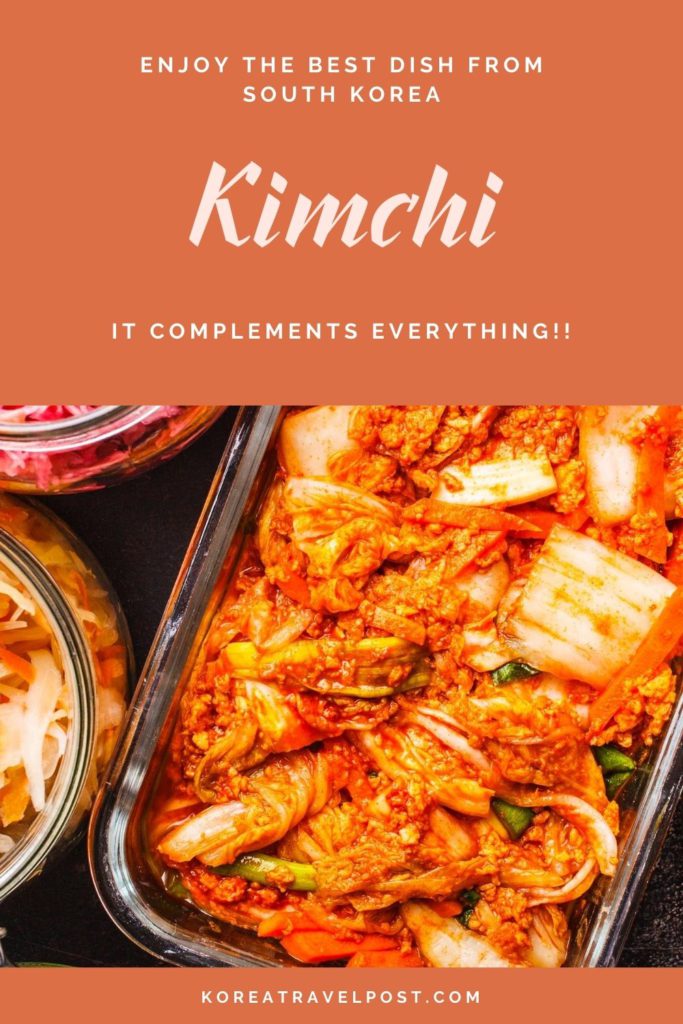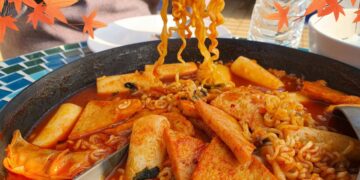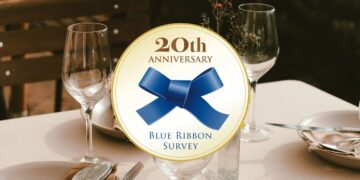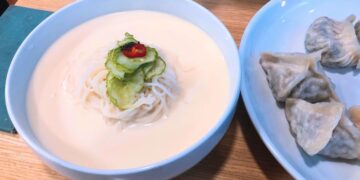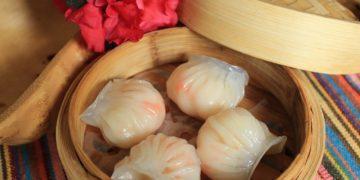Last Updated on 5 years by admin
All of us have heard about ‘Kimchi‘ at least once, especially if you are familiar with Korean food. It’s a traditional side dish of Korea made of salted and fermented vegetables. It is a staple of all Korean foods and is well known among people who plan to visit South Korea. But, there’s always room to learn more about the Korean food before you get to travel to South Korea.
Overall, the texture and taste of kimchi is crunchy, sweet, tangy, and can be spicy based on the type of preparation.
For those who don’t know anything about it, at its very basic level, it is like a pickled cabbage served as a side dish with any meal in Korean cuisine.
Traveling to Korea, you might find kimchi in pizzas and hamburger!
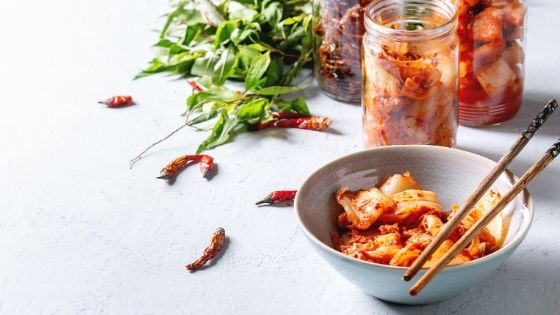
The Origin Story
Very few people know the origins of the kimchi side dish. It started out like most simple fermented vegetable dishes in the 4th century. During the earlier times, there were no ways to store foods for a long time, so fermentation was the way to go.
From the 5th century up until the 12th century, vegetable fermentation was most commonly done using salt or soy sauce. It was referred to as jangajji.
After the 12th century, additional ingredients like ginger and garlic were added, and the Korean dish separated into two types – seasoned kimchi and water kimchi.
Next came up the seokkbakji kimchi in the 15th-16th centuries with the addition of salted seafood (jeotgal).
The Korean staple side dish, as we know today, with gochu (Korean chili pepper) did not come into existence until the mid-Joseon era in the 17th and 18th centuries. Introduction of chili peppers in Korea led to seasoning being placed between each leaf of a whole cabbage, creating tongbaechu (whole cabbage) kimchi, and bossam (wrapped) kimchi .
Evolution & Different Types of The Dish
As mentioned earlier, there are many different ways to make the tasty dish of Korean food, and they have evolved over time. According to records, there are over 300 unique types of kimchi! Each of them has a unique zingy twist in regards to flavor. They can be sorted based on the region of creation, season, ingredients, and even the presentation of the dish.
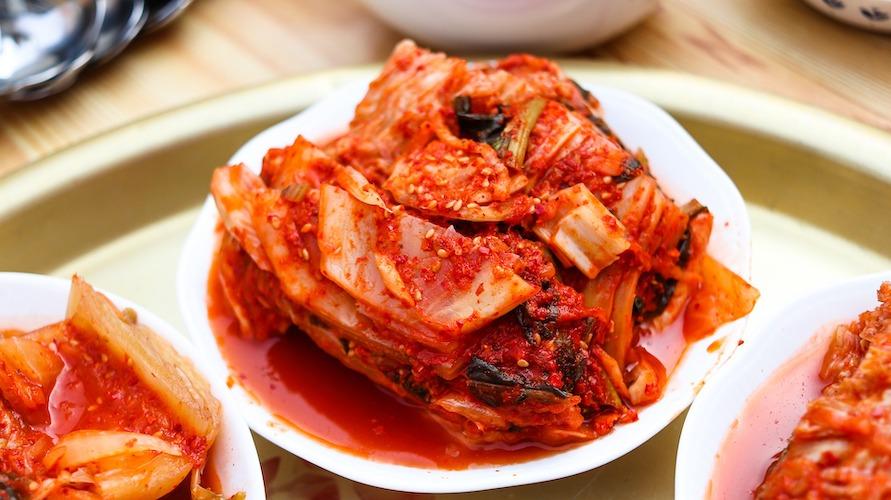
Regional Variations
Each region has its own way of making the Korean dish.
- Seoul and Gyeonggi-do Area – The dish from the region is neither too salty nor too bland, and uses a lot of jeotgal in the seasoning.
- Joella Region – The dish is both spicy and salty. Signature Jeolla region varieties include godeulppaegi (Korean daisy) kimchi, gat (leaf mustard) kimchi of Haenam, and dongchimi (radish water) from Naju.
- Gangwon-do Region – Being close to the ocean, gajami sikhae (spicy fermented flounder), or squid is a part of the Korean dish.
- Chungcheon Region – The preparation includes jogi jeot (salted yellow corvina), hwangseogeo jeot (salted yellow croaker), or saeu jeot (salted shrimp).
Seasonal Variations
Kimchi is a popular year-round dish, but the preparation varies based on the seasonal availability of the ingredients.
- Spring – minari (water dropwort) and eolgali baechu (winter-grown cabbage)
- Summer – water kimchi types such as yeolmu (young summer radish)-based and cucumber-based
- Fall – dish with Korean chili pepper, kkaennip (perilla leaf), and jjokpa (Chinese onion)
- Winter – strongly seasoned kimjang kimchi
Benefits of Kimchi
All the ingredients used in the preparation of the dish are not only unique because of their flavors, but also in the fermentation, preservation, food hygiene, and nutritional value of the Korean food.
According to Health Magazine, this South Korean dish is one of the five healthiest food in the world. It has several beneficial bacteria that aid in digestion, and the gochu garu makes it a great source of vitamin C.
Kimjang Culture – The Culture of Sharing Kimchi
Kimjang refers to the time when Korean families get together to make large quantities of kimchi, which they share with relatives or people in the community.
The traditional Korean culture of Kimjang has continued for generations. It allows people to feel a sense of belonging, and to put Jeong, a Korean feeling of attachment and social collectiveness, into practice.
Kimjang was also recognized as an Intangible Cultural Heritage of Humanity by UNESCO in 2013.
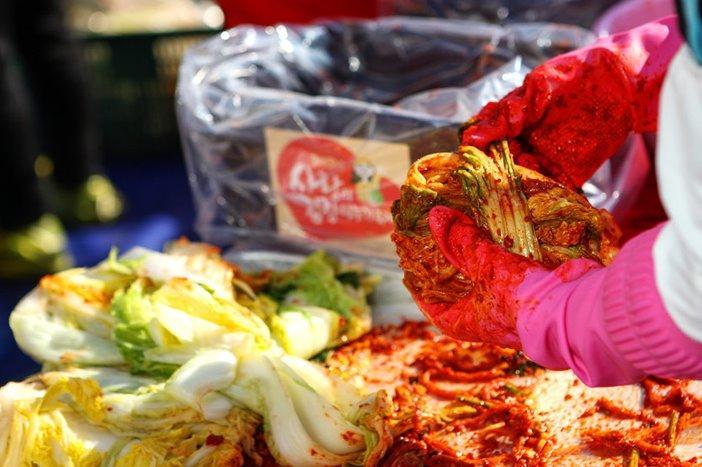
Eating Kimchi In Korea
Well, if you haven’t tasted kimchi before your trip to South Korea, knowing more about this Korean food is definitely gonna be helpful.
The first thing that you will notice about this Korean food dish is that it is spicy. Once you get used to the level of spiciness, you can appreciate the taste and deliciousness of the dish.
The texture of the dish should always be crunchy – like eating a carrot. If it is mushy and soft, then it is not a good preparation. It’s not all bad, but it definitely isn’t the best you can get.
Although you can’t travel right now, but if the post got your mouth watering for trying the dish, you could probably find it at your local Asian supermarket.
Typical Variations That You Will Get Across in Korean Restaurants
Baechu Kimchi (배추김치)
The whole cabbage kimchi is one of the most popular dishes on the list. It is served with all meals. Favour-wise, it’s not very spicy but rather mild. This variation of the Korean dish is made with salted napa cabbages with spicy seasonings such as gochujang (red pepper paste) and chili pepper powder.
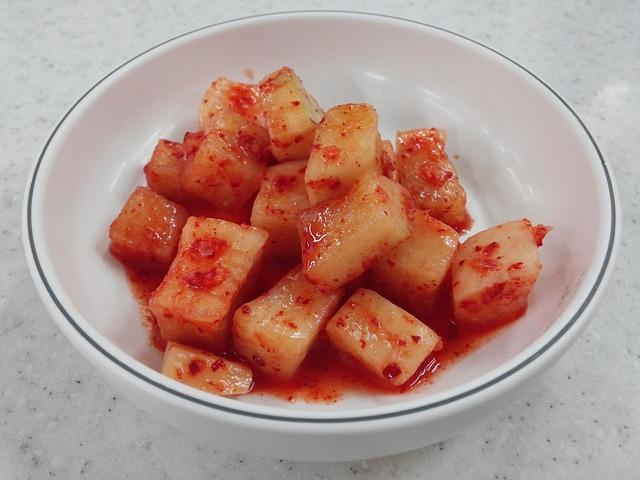
Ggakdugi Kimchi (깍두기)
Ggakdugi is made of cubed white radish. It’s the next common type in Korea after baechu kimchi and is usually served with soups. Overall, the color of the dish is red, but it’s not too spicy. It is generally quite sweet and crunchy.
Yeolmumul Kimchi (열무물김치)
Green water kimchi is perfect for hot and humid Korean summers. It’s made of yeolmu radishes, and it is not too spicy since it is watery. When the dish is combined with thin white noodles, it’s a delightful dish for hot summers.
Chonggak Kimchi (총각김치)
Chonggak (ponytail radish) kimchi is made of salted and fermented young radishes. If you love spicy food, then this variation is perfect for you.
Want to Know More About the Iconic Dish?
Did you know there is a Korean museum dedicated to the iconic Korean food, kimchi? Museum Kimchikan is the first museum where you can learn more about the story of the Korean dish and how it has evolved over the years. Plan a trip to Museum Kimchikan to see how the dish has evolved with more t
Museum Kimchikan
The museum is located in the center of the popular area of Insa-dong. Museum Kimchikan features many exhibitions and experiences to learn about kimchi. It is the only museum in Korea that is included in CNN Travel’s list of 11 of the world’s top food museums.
You can freely explore the exhibitions and also use an audio guide device to learn more about all the different exhibits.
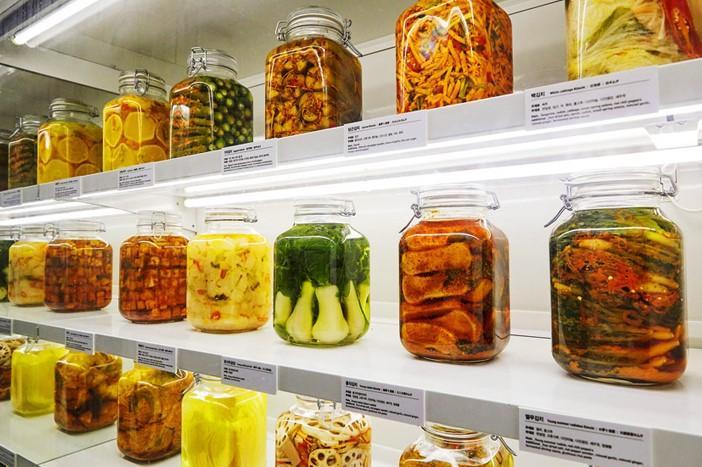
There is a unique space in the museum that shows different types of kimchi or fermented food from across the world. The room, known as kimchium, is temperature-controlled like a walk-in refrigerator with long shelves lined with glass jars.
There are kimchi-making programs for international visitors who want more hands-on knowledge. You can choose to make either spicy baechu kimchi or the non-spicy baekkimchi. And the best part, you can take the food you made back home.
Museum Kimchikan
Hands-on programs: Baekkimchi 20,000 won | Tong baechu kimchi 20,000 won | One-day kimchi 6,000 won | Craft (tote bag) 6,000 won
Website: www.kimchikan.com
Address: 4-6F, 35-4, Insadong-gil, Jongno-gu, Seoul
Directions: Walk for approx. 5 min from Anguk Station (Seoul Subway Line 3), Exit 6 or Jonggak Station (Seoul Subway Line 1), Exit 3 or 3-1
Operating hours: 10:00-18:00
- Closed Mondays, January 1, Seollal (Lunar New Year’s Day) & Chuseok (Korean Thanksgiving Day) holidays, Christmas Day
Admission: Adults 5,000 won | Children 3,000 won | Preschoolers 2,000 won
- Hanbok experience: 1,000 won
- Kimchi making program fees charged separately
Tell us your thoughts about the Korean dish. Does it sound appetizing? Let us know by writing your comments below!
Image Credits: Pixabay and Korea Tourism Organization – VisitKorea
Love it?
Pin it and save it for later!
